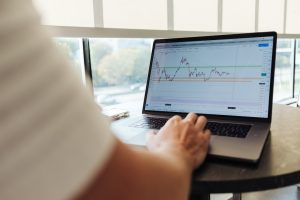Stochastic indicators are a popular tool for forex traders used to identify potential market reversals. The stochastic oscillator is a momentum indicator that compares the closing price of an asset to its price range over a certain period of time. The oscillator is plotted on a scale of 0 to 100, and it is ideal for identifying overbought and oversold conditions in the market. In this article, we will explore what stochastic settings are and how to determine the best stochastic settings for forex trading.
What are Stochastic Settings?
Stochastic settings refer to the parameters used in the stochastic oscillator. The most commonly used stochastic settings are the %K and %D lines. The %K line is the main line, and it is calculated by comparing the latest closing price to the range of prices over a certain period. The %D line is a moving average of the %K line and helps to smooth out the indicators’ fluctuations.
The default settings for the stochastic oscillator are 14, 3, and 3. This means that the oscillator is calculated over a 14-day period, and the %K and %D lines are smoothed with a 3-day moving average. However, traders can adjust the settings to suit their trading style and preferences.
Determining the Best Stochastic Settings for Forex Trading
The best stochastic settings for forex trading depend on the trader’s trading style, time frame, and the asset being traded. Here are some factors to consider when determining the best stochastic settings:
1. Trading Style
The stochastic oscillator is a versatile tool that can be used by both short-term and long-term traders. Short-term traders may prefer to use lower time frame charts, such as 5-minute or 15-minute charts, and adjust the stochastic settings accordingly. Long-term traders may prefer to use higher time frame charts, such as daily or weekly charts, and use the default settings.
2. Time Frame
The time frame of the chart being analyzed is an important factor to consider when determining the best stochastic settings. Short-term traders may prefer to use lower time frame charts, such as 5-minute or 15-minute charts, and adjust the stochastic settings accordingly. Long-term traders may prefer to use higher time frame charts, such as daily or weekly charts, and use the default settings.
3. Asset Being Traded
Different assets have different price ranges and volatility, which can affect the best stochastic settings. For example, a highly volatile asset may require a shorter period for the stochastic oscillator to be effective, while a less volatile asset may require a longer period.
4. Market Conditions
Market conditions can also affect the best stochastic settings. For example, in a trending market, a shorter period may be more effective, while in a range-bound market, a longer period may be more effective.
Conclusion
In conclusion, the best stochastic settings for forex trading depend on the trader’s trading style, time frame, and the asset being traded. Traders should experiment with different settings and observe how they perform in different market conditions. It is essential to remember that no single indicator can provide a perfect signal, and traders should use a combination of tools to make informed trading decisions. The stochastic oscillator is a powerful tool that can provide valuable insights into potential market reversals, and traders should take the time to understand its settings and how it works.





